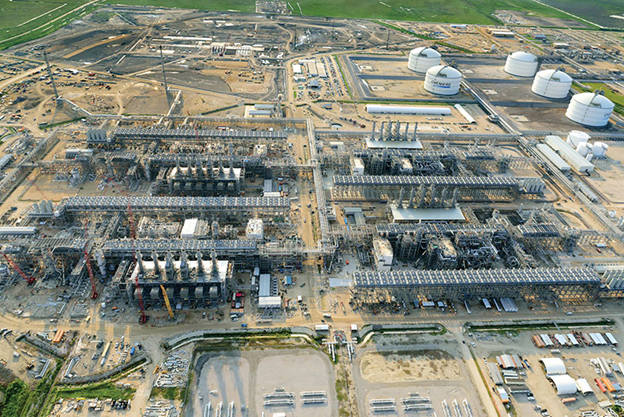U.S. LNG Feedgas Cut by Arctic Freeze, Problems at Freeport LNG
(Reuters) — The amount of natural gas flowing to U.S. LNG export plants dropped to a one-year low this week as an Arctic freeze caused some energy firms to divert fuel to the domestic market and Freeport LNG's facility in Texas experienced mechanical problems.
Gas flows to the seven big U.S. LNG export plants have fallen to an average of 13.9 billion cubic feet per day (Bcf/d) so far in January from a monthly record of 14.7 Bcf/d in December, according to data from financial firm LSEG.
On a daily basis, LNG feedgas was on track to jump about 4.2 Bcf/d over the past two days to 13.5 Bcf/d on Thursday after dropping by 5.8 Bcf/d from Jan. 13-16 to a one-year low of 9.2 Bcf/d on Tuesday.
One billion cubic feet of gas is enough to supply about 5 million U.S. homes for a day.
Most of this week’s reductions occurred at U.S. energy company Cheniere Energy's Sabine Pass facility in Louisiana and Corpus Christi operation in Texas, Freeport LNG's plant in Texas and Cameron LNG's plant in Louisiana.
Freeport LNG told Texas environmental regulators that liquefaction train 2 shut on Jan. 16 and train 3 tripped on Jan. 17.
Officials at Freeport LNG had no comment, but LSEG data showed that at least two of the three liquefaction trains at Freeport LNG were on track to be in service on Jan. 18.
As for the other LNG export projects, with next-day gas prices at the Henry Hub benchmark in Louisiana soaring to a 22-month high of $13 per MMBtu earlier this week, some analysts said energy firms likely sold gas supplies into the U.S. spot market rather than liquefy it for sale overseas.
The analysts said that was especially likely with global gas trading at a five-month low of around $9 per MMBtu at the Dutch Title Transfer Facility (TTF) benchmark in Europe and a seven-month low of $10 at the Japan Korea Marker (JKM) in Asia.
Related News
Related News

- Trump Aims to Revive 1,200-Mile Keystone XL Pipeline Despite Major Challenges
- ONEOK Agrees to Sell Interstate Gas Pipelines to DT Midstream for $1.2 Billion
- Energy Transfer Reaches FID on $2.7 Billion, 2.2 Bcf/d Permian Pipeline
- Boardwalk Approves 110-Mile, 1.16 Bcf/d Mississippi Kosci Junction Pipeline Project
- Kinder Morgan Approves $1.4 Billion Mississippi Crossing Project to Boost Southeast Gas Supply
- Tullow Oil on Track to Deliver $600 Million Free Cash Flow Over Next 2 Years
- GOP Lawmakers Slam New York for Blocking $500 Million Pipeline Project
- Energy Transfer Reaches FID on $2.7 Billion, 2.2 Bcf/d Permian Pipeline
- Enbridge Should Rethink Old, Troubled Line 5 Pipeline, IEEFA Says
- Caspian Pipeline Consortium Lowers 2024 Oil Export Forecast Again





Comments